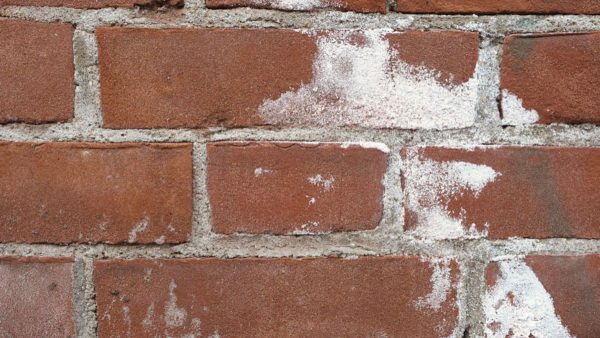Dealing with efflorescence

In the intricate world of construction and masonry, a common challenge often surfacing is the unwelcome appearance of efflorescence. This can appear like a harmless mark to clean up, but it is much deeper than that. Efflorescence is a serious concern. We will discuss the root causes and present practical methods for dealing with this persistent surface phenomenon.
What is efflorescence
Efflorescence manifests as a powdery or crystalline deposit that emerges on the surface of materials like masonry, concrete, or other porous substances. Often characterized by its white or grayish appearance, efflorescence not only compromises the visual appeal of structures but also hints at potential moisture-related challenges that merit attention. While primarily cosmetic, the presence of efflorescence underscores the importance of understanding its origins and implementing effective remedies.
Exploring the causes of efflorescence
Efflorescence results from water-soluble salts migrating within materials, eventually crystallizing as moisture evaporates from their surfaces. Numerous factors contribute to the formation of efflorescence:
- Water Infiltration: Moisture intrusion into porous materials initiates the dissolution of soluble salts within them.
- Capillary Action: Water travels through the small pores and cracks in materials, transporting dissolved salts to the surface.
- Temperature and Humidity: Weather conditions, including temperature fluctuations and humidity levels, play a pivotal role in influencing the rate at which efflorescence develops.
- Salt Content: The type and quantity of salts present within the materials influence the severity and extent of efflorescence.
Effective strategies for dealing with efflorescence
The battle against efflorescence involves both proactive prevention and, when that fails, getting it taken care of quickly.
- Preventive measures: Proactive steps must be taken to minimize water infiltration into porous materials to mitigate efflorescence. These steps include ensuring proper surface drainage, sealing cracks, and selecting materials with lower salt content.
- Surface cleaning: If efflorescence has already made its presence felt, surface cleaning becomes a standard remediation method. Surface cleaning typically entails brushing or pressure-washing the affected area to dislodge and remove the deposits. However, this approach may not prevent efflorescence from reoccurring if the underlying moisture issue persists.
- Chemical cleaners: Sometimes, using chemical cleaners specifically formulated to dissolve efflorescence can prove effective. These cleaners aid in breaking down and eliminating salt deposits.
- Sealing and waterproofing: Applying sealants or waterproof coatings to the affected surface is a preventive measure that hinders moisture infiltration and reduces the likelihood of efflorescence reemergence.
- Proper curing: During construction, ensuring the adequate curing of concrete and masonry materials can mitigate the risk of efflorescence. Proper curing allows excess salts to leach out before the materials are sealed, minimizing future deposits.
We know that efflorescence is an unwelcome site on your commercial structure. Understanding its causes and implementing effective prevention can help keep it under control. Still, if you are in a situation where you need professional help to treat it or prevent it, we would love to help.
